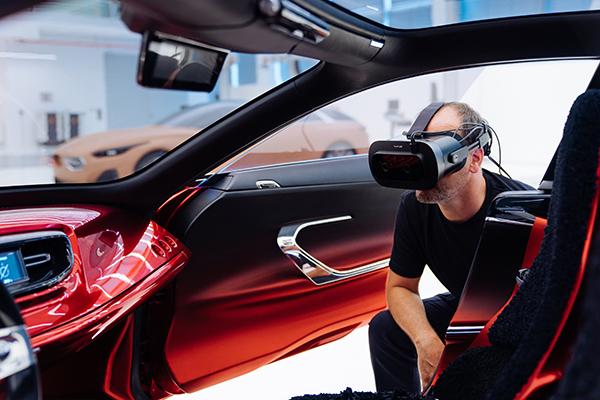SOLIDWORKS 2021
The popular mechanical program SOLIDWORKS is now in version 2021. Among the highlights are the ability to save defeatured or simplified components as a configuration, so you can toggle between the defeatured version and the original detailed version.
It also comes with better handling of small gaps in mesh models in simulation, and fillet along nonplanar surfaces in sheetmetal design. If you have a GPU, you can expect to see better performance, specifically in assembly rotation, and in displaying models with silhouetted edges and occlusion culling.
When you export an interference report, you can now include thumbnails of the parts involved. Unlike an Excel sheet with part numbers only, the visuals will make it easier to identify the problematic components when you get ready to fix the issues.
There are also ancillary offerings under the brand 3DEXPERIENCE WORKS. Among them are cloud-hosted software such as 3D Sculptor, a subdivisional modeling program for making organic shapes, and 3D Creator, for quick design creation and simulation.
For more details, read the post on SOLIDWORKS 2021 here.
KIA, Varjo, and Autodesk VRED
Recently Korean car maker KIA announced a partnership with the AR/VR hardware and software developer Varjo to design cars using AR/VR. This also involves the use of Autodesk VRED software, an automotive design visualization program.
According to Varjo, the KIA European team tried the headset and was impressed by what they were able to see inside the virtual world.
Varjo points out that, “With Varjo XR-1, designers can work with their colleagues in the physical design space they’re used to and collaborate on photorealistic, real-scale virtual car models while seeing their hands and bodies. In an immersive mixed reality experience like this, they’re able to talk as they go, give immediate feedback, and run more engaging reviews.”
These use cases will likely become more common during the era of social distancing where only a limited number of people can actually meet and work together in an office.
Omniverse
This month NVIDIA GTC also took place online, with CEO Jensen Huang delivering his keynote from his own private kitchen.
One of the key announcements is Omniverse, a real-time raytraced design environment. Jensen Huang calls it “an open platform for collaboration and simulation.”
This is a new platform for editors and viewers to share scenes and models. The content is rendered in raytracing so what you see inside Omniverse—such as light bouncing behavior, reflections, and shadows—is physically accurate. In terms of compute cycle, these features are expensive to generate, so Omniverse uses a number of methods, like eye-tracked foveation and warped-space. The visuals are streamed, not computed on the headset itself, so the graphics performance is not limited to the processing power of your viewing hardware.
Omniverse works with 3ds max, Maya, Rhno, SketchUp, and Unreal engine, among others. It targets automotive, manufacturing, product design, and robotics industries. Omniverse is now in open beta.
For more on Omniverse, read the post here.
About the Author
Follow Robotics 24/7 on Linkedin
Article topics
Email Sign Up
















